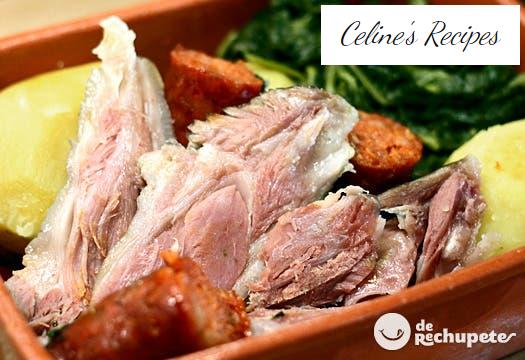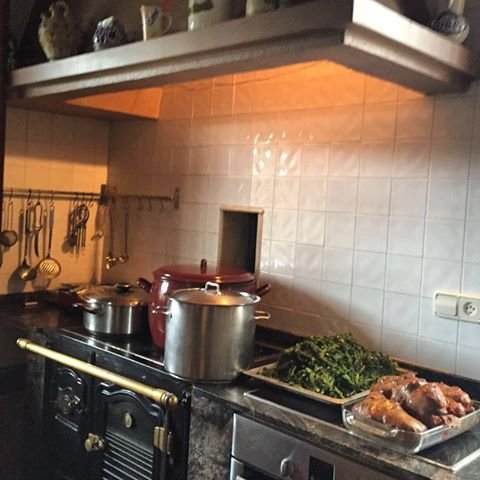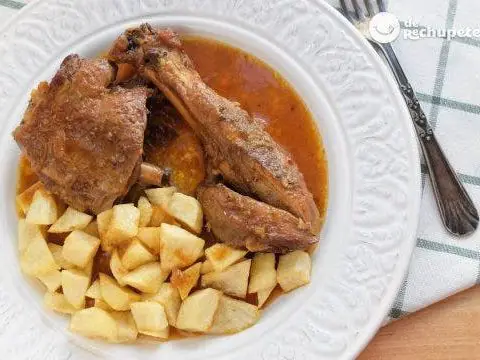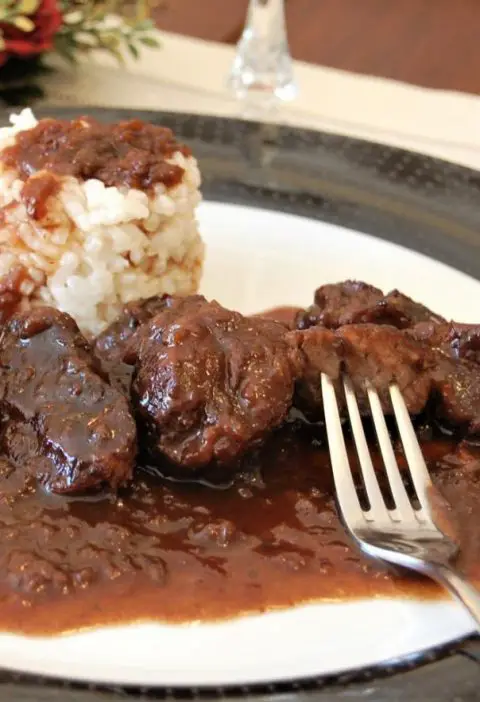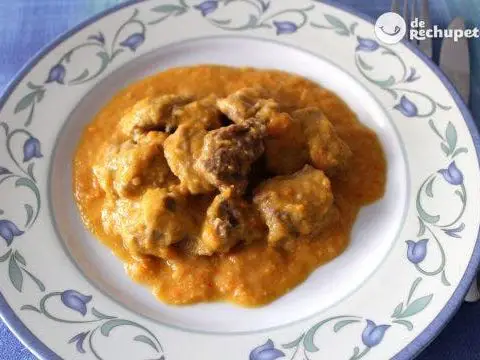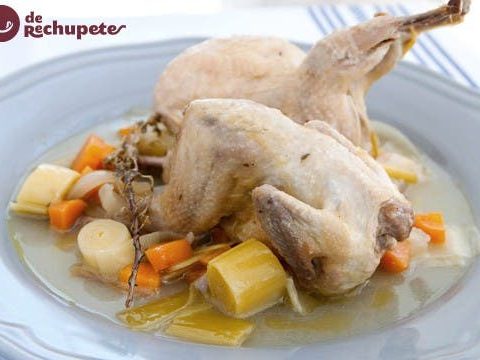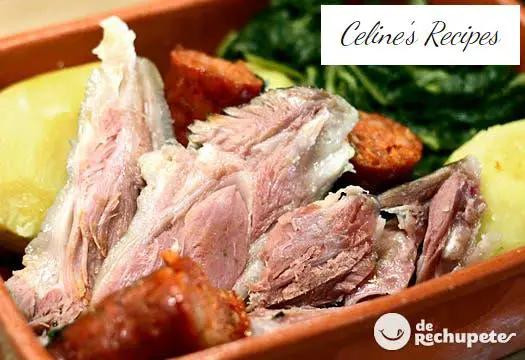
Info.
- Easy
- 90 minutes
- For 4 people
- € 2 / person
How to make lacón with turnip greens .
In the cold months, after the pig slaughters, it is time in Galicia for traditional cuisine based on this grateful animal.
The meat recipes like the Galician stew or pork with turnip greens are present in most of the tables. Both daily and on Sundays, the day when families usually gather around the table.
Some describe this dish as the “little brother” of the Cocido, and I say that it will be due to the least amount of ingredients. Of course, a lacón with turnip tops, well prepared and with a quality product, is comparable to any dish we feel like.
If we look back looking for written references on the “Lacón con grelos” we will first find the book ” La Cocina Práctica” (1st edition 1905) by D. Manuel Puga y Parga, alias “Picadillo”. There the author refers to lacón as an essential raw material in Galician cuisine.
Years later, in 1973, the great teacher Álvaro Cunqueiro in his well-known book “ A Cociña Galega ” , openly disagrees with the writings of “Picadillo” because it does not correspond to the traditional recipes of Galician households. And it provides a more real vision about this traditional dish. We leave you some fragments of his work:
“I already know that turnip, potatoes and sausages are usually served with lacón. In Germanic tradition, pork knuckles go to the plate only with vegetables. Lacón, I understand, must go alone, and not overcooked, with turnip greens. When cooking these, the pie plate must be uncovered, and it is advisable to stir slowly, with a slotted spoon, airing them, and thus they will retain a more lucid green ”
“There are many who prefer cold cooked pork, cut into thin slices. If only we could get it served that way, with a chestnut puree! Cooked, boneless and pressed pork is also made. Or already pressed, you can wick and truffle, which is a very luguese recipe. Another option is to grill the pork shoulder. You have to marinate it well, with oregano, with pepper. Lacón of the slaughter, of course, that has not gone to salt. ”
Of course it is an honor and a pleasure to make room in the blog for this recipe so typical in all Galician homes.
A benchmark for the simplicity of our land, an interior Galicia with quality products where pork is eaten up to its gait.
Preparation of the Lacón with turnip tops
- The preparation of this dish begins 48 hours before serving it on the table. Since it is the time necessary to get the pork to desalt and be at its optimal cooking point.
- We submerge the lacón in abundant cold water, which covers it completely, and we change this water every 8 hours.
- On the eve of the preparation of the recipe, at night, we put the pork in “renewed” water (that covers it completely) in a large saucepan where we are going to cook it.

- Bring the water to a boil and lower it to medium heat, cooking it for 15-20 minutes at that temperature. We turn off and let it rest until the next morning in this broth that has formed.
- It is a simple recipe but it will take time, so we must start preparing it at least 2 and a half hours before the scheduled time to eat.
- In the same saucepan where it has rested, bring the broth to a boil again. Then we cook over medium heat, with the casserole covered, for 2 hours.
- The proportion that is usually done is 1 hour for each kilo that the piece of lacón weighs.
- There are many versions in Galicia of preparing this recipe, we would say almost as many as houses and kitchens.
- In my case I am going to join Cunqueiro’s words where he says that the chorizo should not be cooked next to the pork shoulder so that it does not add flavor or itchiness if they are “ ceboleiro ” chorizo .
- When the 2 hours of preparing the shoulder are completed, remove the saucepan from the heat and let it rest.
- In another pot, bring to a boil a little of the broth from the main casserole. We cook the potatoes in halves and the whole sausages, approximately 30 minutes.
Preparation of turnip greens
- We wash the turnip greens in cold water under the tap and remove the thickest stems, the leaves that may be withered or those that are somewhat yellowish.
- For those who are not familiar with the flavor of the turnip, which has a certain bitterness. You can give them a 2-minute blanching in boiling water.
- After 20 minutes of cooking the potatoes and sausages, add the turnip greens. We cook another 10 minutes.
- We check the point of the potatoes by pricking with a fork. Drain the turnip greens.
- We remove the shoulder of the broth and with the heat it brings, we can easily separate the bone from the meat.
- We cut / carve into slices one centimeter thick.
- We serve everything very hot on the table in the following way: the lacón and the chorizo cut into one source and the potatoes and turnip greens in another. We accompany with a good quality olive oil.
- We have made this recipe without salt since at all times we have cooked in the broth to cook the pork, which already provides enough salt to the ingredients.
Once cooked, the lacón can also be eaten cold and is perfect for you to include in other preparations.
How to accompany pasta, fill a lasagna or as an ingredient in a pizza. I recommend the one we have on the blog Pizza de Lacón con grelos (from the leftovers of this recipe came the idea for the recipe).
You can see photos of the step by step of this recipe for lacón with turnip greens in this album.
Curiosities about the Galician salted pork
- Within the possibilities, we must look for a good salty Lacón. That it comes from pigs fed with household products such as potatoes, chestnuts, collards, etc. Its meat will therefore be redder, harder and more flavorful.
- The ” Lacón” is a term that is used only in Galicia (comes from the Latin lacca) and that has no direct translation into Spanish. It refers to the front leg of the pig, also called brazuelo. And specifically when it is cured and salty.
- The ” Galician Lacón ” has a Protected Geographical Indication. Which means that the products that are under this IGP are strictly controlled by its Regulatory Council. From the birth of the pig until the final product is obtained.
- Once the animals have been slaughtered and the “lacón” has been cut, a very important step in the production process arrives: the salting of the pieces.
- The shoulders are covered with salt so that it is incorporated into the muscle mass. The time is generally one day for each kilo of weight.
- After salting, it is time to cure, which will be for a minimum of 15 days in a cool, dry place. So that it acquires the perfect texture for its conservation.
